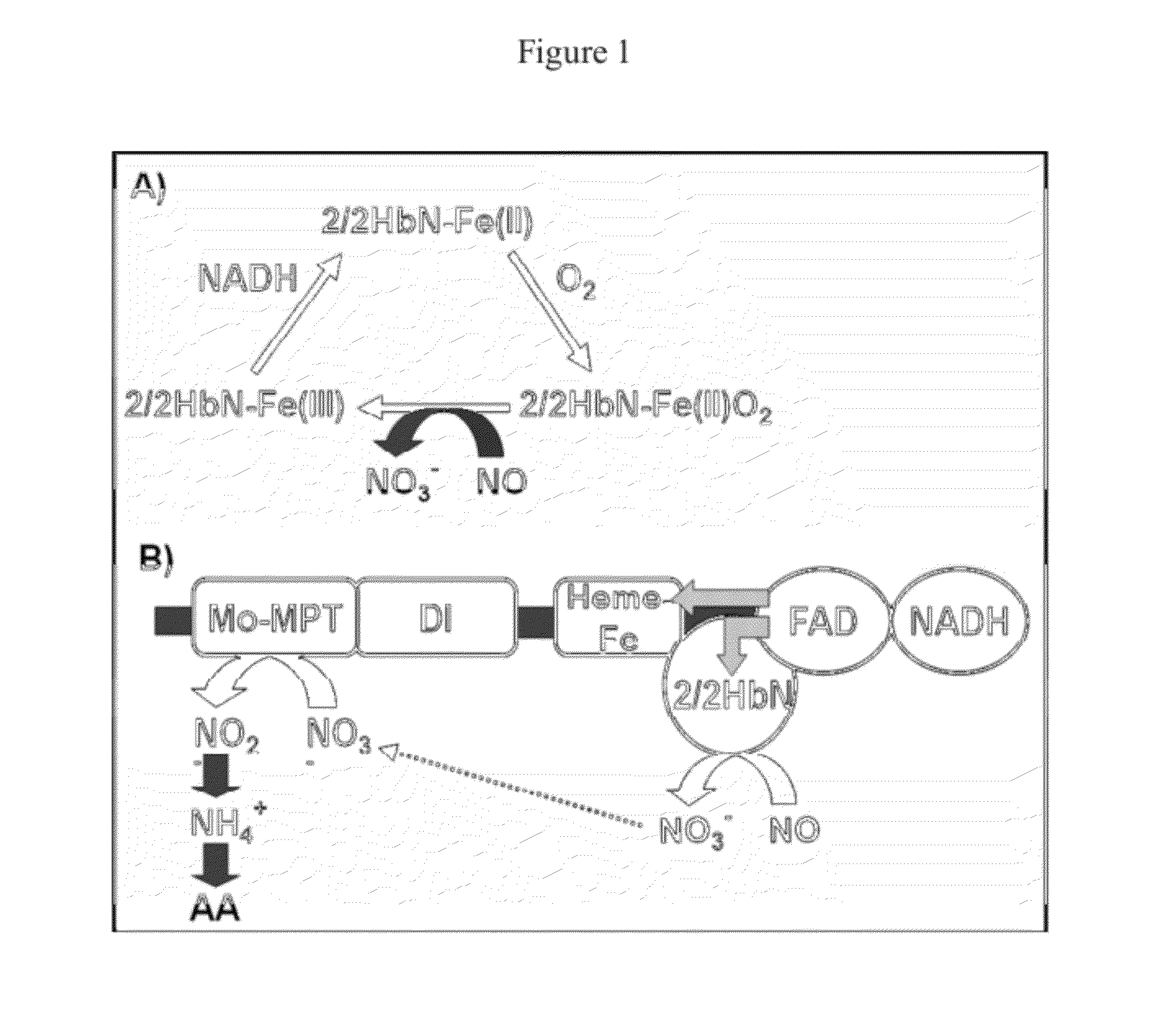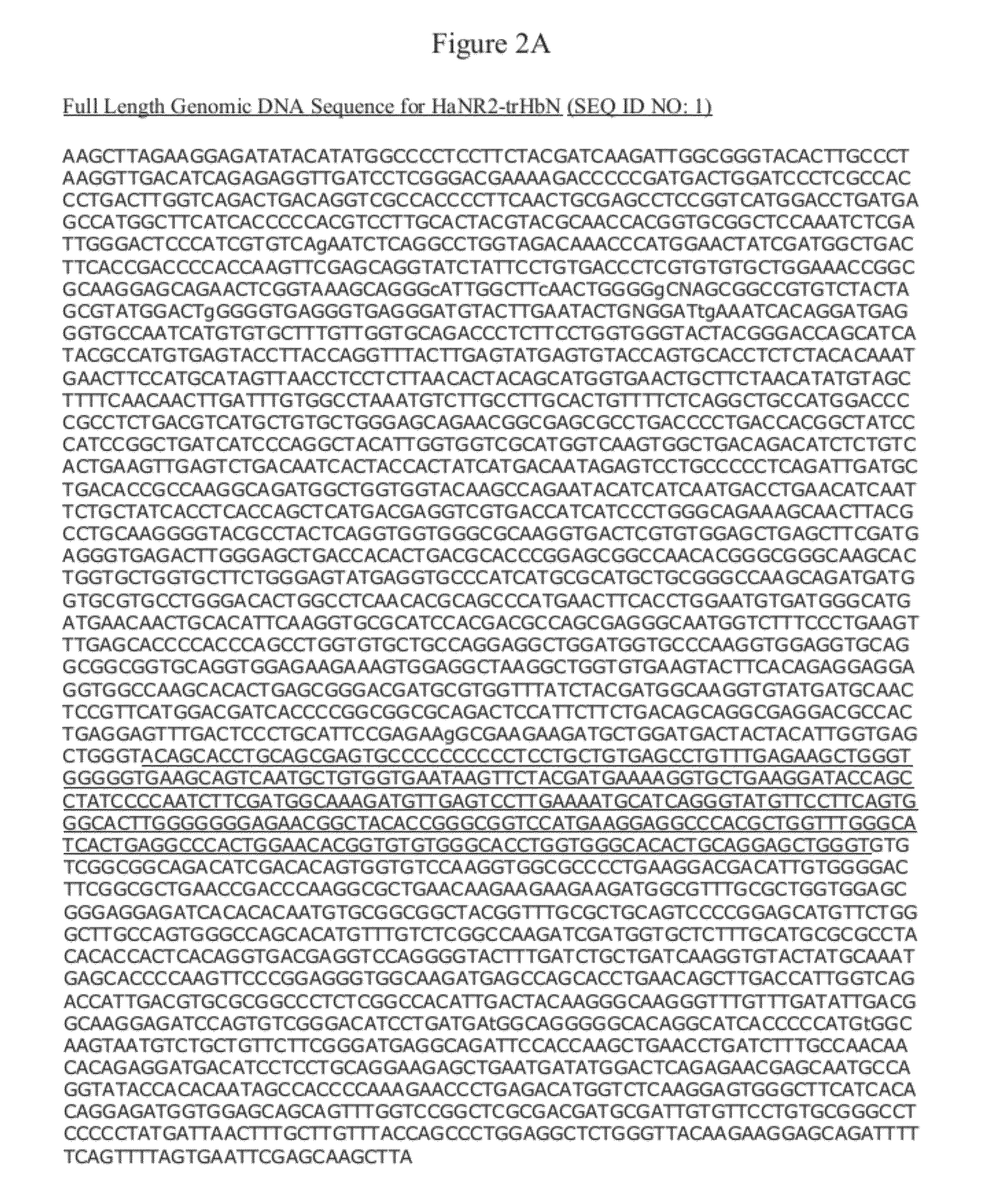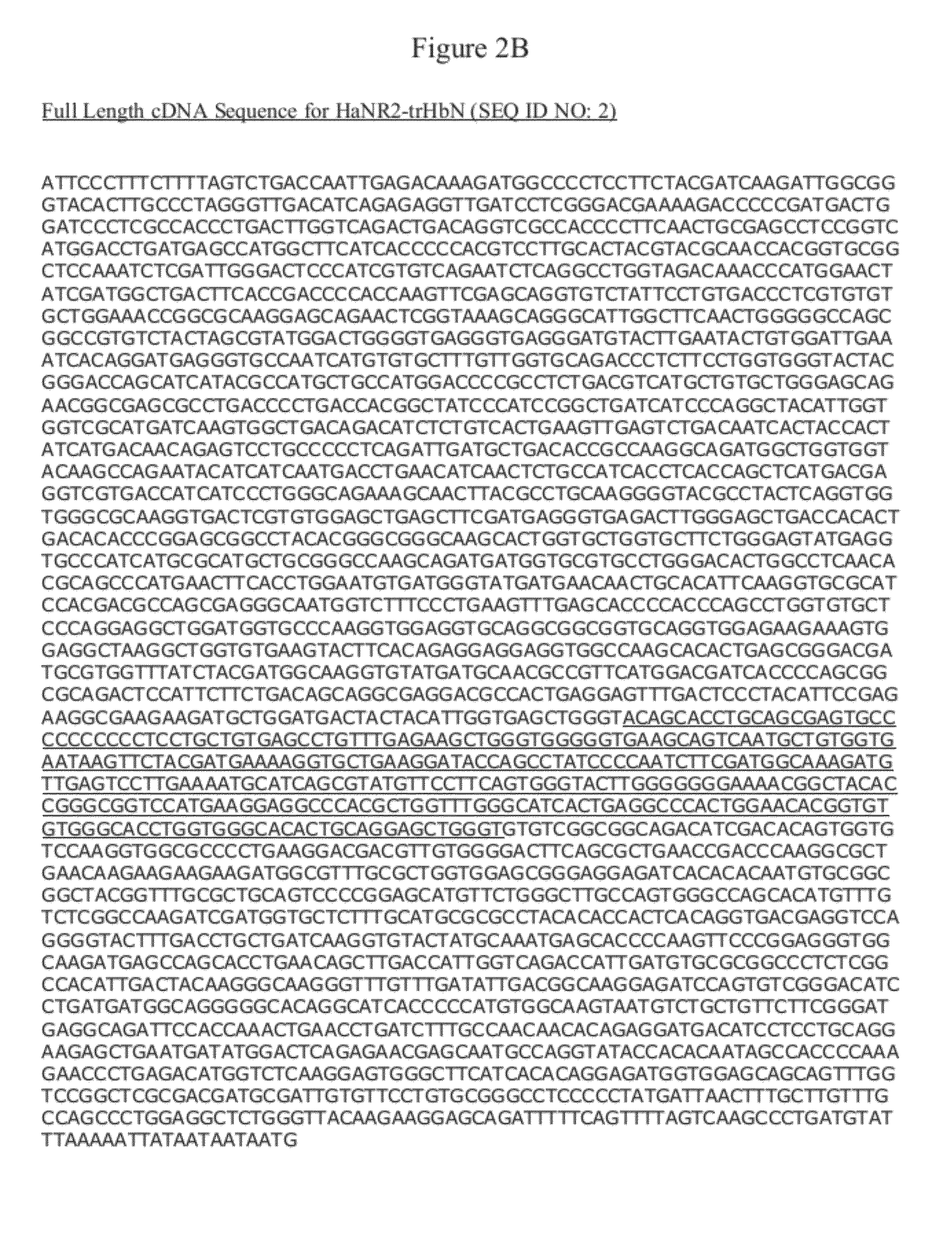Novel nitrate reductase fusion proteins and uses thereof
- Summary
- Abstract
- Description
- Claims
- Application Information
AI Technical Summary
Benefits of technology
Problems solved by technology
Method used
Image
Examples
example 1
HaNR2-trHbN Fusion Protein
[0053]A NR2-trHbN fusion protein was purified from Heterosigma akashiwo, and its sequence was determined.
[0054]Heterosigma akashiwo (CCMP 2393) was obtained from the Provasoli-Guillard Center for the Culture of Marine Phytoplankton (CCMP; Boothbay Harbor, Me.). A stock culture was maintained in seawater diluted to a salinity of 20 and amended with f / 2 nutrients (—Si) (Guillard 1975), grown at 25° C. and an irradiance of ˜185 μmol quanta m−2s−1, and set to a 12:12 h light:dark cycle.
[0055]RNA was extracted from Heterosigma akashiwo (CCMP 2393) and reverse transcribed using oligo-dT-Heel primer (Coyne et al. 2004) as previously described in Coyne (2010). To obtain the 3′ end of the sequence, cDNA was then used as template in 20 μL PCR reactions containing 0.2 mM dNTPs, 0.25 μM Heel primer (Coyne et al. 2004), 0.25 μM HaNR—F primer (Coyne 2010), 2.5 mM MgCl2, 1× Taq polymerase buffer (Sigma, St. Louis, Ill. USA) and 0.5 units Jump-Start Taq Polymerase (Sigma)....
example 2
CsNR2-trHbN Fusion Protein
[0059]A CsNR2-trHbN fusion protein was purified from Chattonella subsalsa, and its sequence was determined.
[0060]Chattonella subsalsa (CCMP 2191) was obtained from the Provasoli-Guillard Center for the Culture of Marine Phytoplankton (CCMP; Boothbay Harbor, Me.). A stock culture was maintained in seawater diluted to a salinity of 20 and amended with f / 2 nutrients (—Si) (Guillard 1975), grown at 25° C. and an irradiance of ˜185 μmol quanta m−2s−1, and set to a 12:12 h light:dark cycle.
[0061]Chattonella subsalsa (CCMP2191) was cultured in f / 2 medium and DNA was extracted as described in Coyne et al. (2001). A fragment of the NR gene was amplified by PCR using degenerate primers designed from conserved regions of NR. PCR reactions consisted of 20 μL reactions containing 0.2 mM dNTPs, 0.5 μM each primer NR231F (ATHGGNGGNMGNATGATHAARTGG) (SEQ ID NO: 10) and NR394R (RTTRTTCATCATNCCCAT) (SEQ ID NO: 11), 2.5 mM MgCl2, 1× Taq polymerase buffer (Sigma) and 0.5 units ...
example 3
Phylogenetic Analysis and Alignment of trHbN Region of HaNR2
[0064]The boundaries for the amino acid sequence of the trHbN domain in HaNR2-trHbN were initially defined to include the 107 amino acids inserted in HaNR2-trHbN that were excluded from HaNR1. However, alignment with other trHb sequences (FIG. 5) revealed that the H-helix of the trHbN domain was also included in the HaNR1 sequence (Coyne 2010). Therefore, a total of 137 amino acids including the H-helix were used for phylogenetic and sequence analyses of the trHbN domain in HaNR2-trHbN. An NR1 gene was not found for C. subsalsa. Consequently, the boundary of the trHbN domain in CsNR2-trHbN was defined by alignment with HaNR2-trHbN and a total of 148 amino acids were included in the analysis.
[0065]The nucleotide sequences for trHbN domains in both NR2-trHbNs were compared to sequences in the NCBI protein database using the BLASTX algorithm (Altschul et al. 1997). Phylogenetic analyses were conducted in MEGA4 (Tamura et al. 2...
PUM
| Property | Measurement | Unit |
|---|---|---|
| Fraction | aaaaa | aaaaa |
| Fraction | aaaaa | aaaaa |
Abstract
Description
Claims
Application Information
 Login to View More
Login to View More - R&D
- Intellectual Property
- Life Sciences
- Materials
- Tech Scout
- Unparalleled Data Quality
- Higher Quality Content
- 60% Fewer Hallucinations
Browse by: Latest US Patents, China's latest patents, Technical Efficacy Thesaurus, Application Domain, Technology Topic, Popular Technical Reports.
© 2025 PatSnap. All rights reserved.Legal|Privacy policy|Modern Slavery Act Transparency Statement|Sitemap|About US| Contact US: help@patsnap.com



